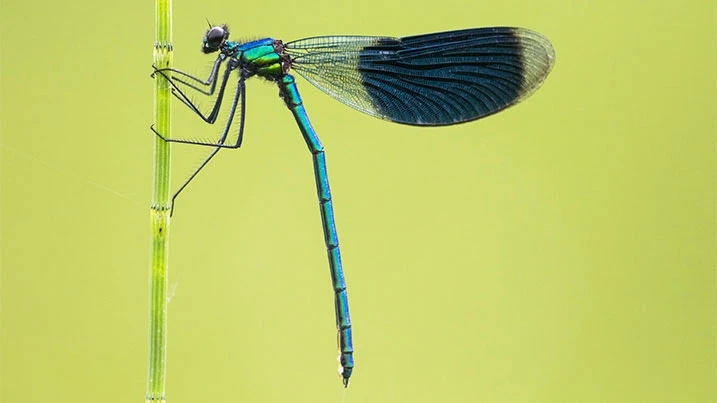Recently I was staying in a 7th floor flat in Westminster, London, which was hardly Nature Central. Yet the occupant of the neighbouring flat had built a garden on their small balcony - a green oasis in the desert of stone, brick and glass. Along with the trees in tubs, window boxes was a terracotta bowl, with a floating lily. A pond by any other name. The lilliputian lily pond was visited by, inter alia, wasps and bees, and once a grey squirrel. The pond on the balcony was a rather practical, even poignant, reminder that of all the habitats one can create to aid wildlife, a pond is the most useful. Although around 470,000 ponds remain in the British countryside, many are polluted and degraded by lack of maintenance. Some of the loss of habitat has been offset by the suburban gardener, with roughly 1 in 10 British back gardens now having a pond. A pond in your garden is an individual incremental increase in the freshwater habitat; a series of ponds in a neighbourhood can establish an aquatic corridor that allows wildlife to move around. Any pond is better than no pond, and even a sunken bucket will make a discernible difference to the number and types of animals that visit the garden. Dragonflies are quite content breeding in old washbasins and Mrs Tiggy-Winkle will quite happily slurp from an upturned metal dustbin lid. But as a rule, the bigger the pond the better: a bigger pond provides a range of complex mini habitats, and deep water is less likely to boil in high summer or freeze solid in winter. A hibernating frog will thank you for a deep end of about 60–90cm.Ponds also store carbon, helping to reduce global warming. And, in addition to the wildlife that lives in and around ponds, they’re watering holes for passing birds, mammals, and insects. Even when the pond is just twelve inches in diameter on the 7th floor of an apartment block in urban Westminster. *** How to Make A Mini Pond- Extracted from The Wildlife Garden by John Lewis-Stempel, How To Books, 2024 If you only have a small garden, pretty much any waterproof container can make a mini-pond. Wooden half-tubs and old stone sinks work well, or else choose a metal bucket or a glazed ceramic pot. Neither do ponds have to be ‘dug in’. If your pond is free-standing, just make sure there is a ramp in and out (stones, bricks and plants are ideal) so that wildlife has access. Newts and frogs will sometimes lay their eggs in a pond only a metre square, and if they can’t be tempted to breed in your container pond, it can still help them keep cool in summer. • Fill your container with rainwater. If you have to use tap water, leave it to stand for a couple of days to neutralise. • Select your plants. As with a bigger pond, choose a combination of marginals, oxygenators and floating aquatics. Try water soldier (Stratiotes aloides) as an oxygenator, and dwarf lily (Nymphaea odorata) as a deep water aquatic. One lily will be enough for a container pond. • Plant any marginals in plastic aquatic baskets lined with gravel, filled with a specially designed compost (or clay loam) and dressed with gravel. To get the right height for the plant use bricks, placing the planted basket on top.





We will be moving to Sedbergh soon and will own for the first time our own garden. Building a small pond is high up on the priority list (as is planting an apple tree of a local variety). I am always struck by just how much wildlife finds even the smallest of ponds - even deep in the middle of a city.
Our first pond was in an old sink; our second, a small dug-in pond. Both times I was amazed at how quickly all sorts of creatures arrived and what a difference they made to the garden.